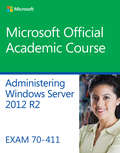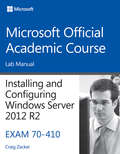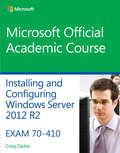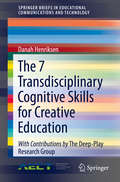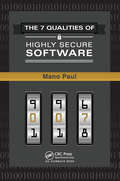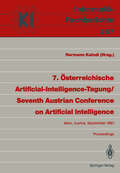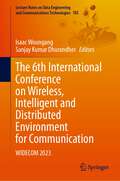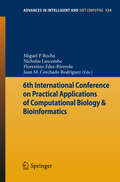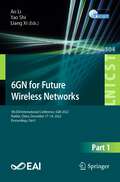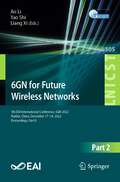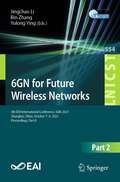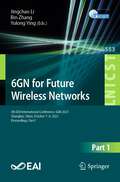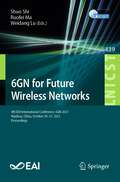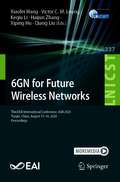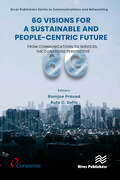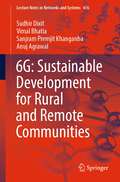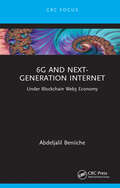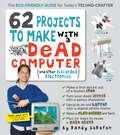- Table View
- List View
70-411 Administering Windows Server 2012 R2
by Microsoft Official Academic CourseNOTE: This product is a standalone textbook. Access code not included.This 70-411 Administering Windows Server 2012 R2 textbook covers the second of three exams required for Microsoft Certified Solutions Associate (MCSA): Windows Server 2012 certification. This course validates the skills and knowledge necessary to administer a Windows Server 2012 Infrastructure in an enterprise environment. The three MCSA exams collectively validate the skills and knowledge necessary for implementing, managing, maintaining, and provisioning services and infrastructure in a Windows Server 2012 environment. This Microsoft Official Academic Course is mapped to the 70-411 Administering Windows Server 2012 exam skills, including the recent R2 objectives. This textbook focuses on real skills for real jobs and prepares students to prove mastery of core services such as user and group management, network access, and data security. In addition, this book also covers such valuable skills as: Implementing a Group Policy Infrastructure Managing User and Service Accounts Maintaining Active Directory Domain Services Configuring and Troubleshooting DNS Configuring and Troubleshooting Remote Access Installing, Configuring, and Troubleshooting the Network Policy Server Role Optimizing File Services Increasing File System Security Implementing Update Management The MOAC IT Professional series is the Official from Microsoft, turn-key Workforce training program that leads to professional certification and was authored for college instructors and college students. MOAC gets instructors ready to teach and students ready for work by delivering essential resources in 5 key areas: Instructor readiness, student software, student assessment, instruction resources, and learning validation. With the Microsoft Official Academic course program, you are getting instructional support from Microsoft; materials that are accurate and make course delivery easy.
70-410 Installing and Configuring Windows Server 2012 R2 Lab Manual
by Microsoft Official Academic CourseThis lab manual does not include a MOAC Labs Online access code. This is the companion print lab manual to the 70-410 Installing and Configuring Windows Server 2012 textbook. The 70-410 Installing and Configuring Windows Server 2012 textbook prepares certification students for the first of a series of three exams which validate the skills and knowledge necessary to implement a core Windows Server 2012 Infrastructure into an existing enterprise environment. This Microsoft Official Academic Course is mapped to the 70-410 Installing and Configuring Windows Server 2012 exam skills and includes the recent R2 objectives. This textbook focuses on real skills for real jobs and prepares students to prove mastery of core services such as Active Directory and networking services. In addition, this book also covers such valuable skills as: Managing Active Directory Domain Services Objects Automating Active Directory Domain Services Administration Implementing Local Storage Implementing File and Print Services Implementing Group Policy Implementing Server Virtualization with Hyper-V The MOAC IT Professional series is the Official from Microsoft, turn-key Workforce training program that leads to professional certification and was authored for college instructors and college students. MOAC gets instructors ready to teach and students ready for work by delivering essential resources in 5 key areas: Instructor readiness, student software, student assessment, instruction resources, and learning validation. With the Microsoft Official Academic course program, you are getting instructional support from Microsoft; materials that are accurate and make course delivery easy. Request your sample materials today.
70-410 Installing and Configuring Windows Server 2012 R2
by Microsoft Official Academic CourseThis text does not include a MOAC Labs Online access code. This 70-410 Installing and Configuring Windows Server 2012 R2 textbook prepares certification students for the first of a series of three exams which validate the skills and knowledge necessary to implement a core Windows Server 2012 Infrastructure into an existing enterprise environment. This Microsoft Official Academic Course is mapped to the 70-410 Installing and Configuring Windows Server 2012 exam skills, including the recent R2 objectives. This textbook focuses on real skills for real jobs and prepares students to prove mastery of core services such as Active Directory and networking services. In addition, this book also covers such valuable skills as: Managing Active Directory Domain Services Objects Automating Active Directory Domain Services Administration Implementing Local Storage Implementing File and Print Services Implementing Group Policy Implementing Server Virtualization with Hyper-V The MOAC IT Professional series is the Official from Microsoft, turn-key Workforce training program that leads to professional certification and was authored for college instructors and college students. MOAC gets instructors ready to teach and students ready for work by delivering essential resources in 5 key areas: Instructor readiness, student software, student assessment, instruction resources, and learning validation. With the Microsoft Official Academic course program, you are getting instructional support from Microsoft; materials that are accurate and make course delivery easy.
The 7 Transdisciplinary Cognitive Skills for Creative Education (SpringerBriefs in Educational Communications and Technology)
by Danah HenriksenThis book focuses on rethinking creativity for 21st century education. The specific emphasis examines the way that creativity spans disciplines, through a set of common thinking skills that the most accomplished thinkers in any field use. These seven transdisciplinary thinking skills are rooted in historical exemplars of creativity across disciplines. We examine these skills in more detail, chapter by chapter, to offer examples of what each skill looks like in disciplines ranging from art to science, or music to math, and beyond. This set of thinking skills reflects the way that creativity may look different across fields, yet there are common paths of creative thinking that cut across disciplinary boundaries. Beyond this each chapter also considers applications for such skills in 21st century educational contexts, with an eye toward creative teaching and technology. In all of this, the book weaves together broad cultural examples of creativity and the seven transdisciplinary skills, alongside specific application-based examples from technology and teacher education.
The 7 Qualities of Highly Secure Software
by Mano PaulThe 7 Qualities of Highly Secure Software provides a framework for designing, developing, and deploying hacker-resilient software. It uses engaging anecdotes and analogies-ranging from Aesop's fables, athletics, architecture, biology, nursery rhymes, and video games-to illustrate the qualities that are essential for the development of highly secure
The 7 Qualities of Highly Secure Software
by Mano PaulThe 7 Qualities of Highly Secure Software provides a framework for designing, developing, and deploying hacker-resilient software. It uses engaging anecdotes and analogies-ranging from Aesop's fables, athletics, architecture, biology, nursery rhymes, and video games-to illustrate the qualities that are essential for the development of highly secure
7. Österreichische Artificial-Intelligence-Tagung / Seventh Austrian Conference on Artificial Intelligence: Wien, Austria, 24.–27. September 1991 Proceedings (Informatik-Fachberichte #287)
by Hermann KaindlThe 6th International Conference on Wireless, Intelligent and Distributed Environment for Communication: WIDECOM 2023 (Lecture Notes on Data Engineering and Communications Technologies #185)
by Isaac Woungang Sanjay Kumar DhurandherThis book presents the proceedings of the 6th International Conference on Wireless Intelligent and Distributed Environment for Communication (WIDECOM 2023), which took place at Brock University, St. Catharines, Ontario, Canada, October 11-13, 2023. The book addresses issues related to new dependability paradigms, design, and performance of dependable network computing and mobile systems, as well as issues related to the security of these systems. The goal of the conference is to provide a forum for researchers, students, scientists and engineers working in academia and industry to share their experiences, new ideas and research results in the above-mentioned areas.
6th International Conference on Practical Applications of Computational Biology & Bioinformatics (Advances in Intelligent and Soft Computing #154)
by Nicholas Luscombe Florentino Fdez-Riverola Juan M. Corchado Rodríguez Miguel P. RochaThe growth in the Bioinformatics and Computational Biology fields over the last few years has been remarkable and the trend is to increase its pace. In fact, the need for computational techniques that can efficiently handle the huge amounts of data produced by the new experimental techniques in Biology is still increasing driven by new advances in Next Generation Sequencing, several types of the so called omics data and image acquisition, just to name a few. The analysis of the datasets that produces and its integration call for new algorithms and approaches from fields such as Databases, Statistics, Data Mining, Machine Learning, Optimization, Computer Science and Artificial Intelligence. Within this scenario of increasing data availability, Systems Biology has also been emerging as an alternative to the reductionist view that dominated biological research in the last decades. Indeed, Biology is more and more a science of information requiring tools from the computational sciences. In the last few years, we have seen the surge of a new generation of interdisciplinary scientists that have a strong background in the biological and computational sciences. In this context, the interaction of researchers from different scientific fields is, more than ever, of foremost importance boosting the research efforts in the field and contributing to the education of a new generation of Bioinformatics scientists. PACBB‘12 hopes to contribute to this effort promoting this fruitful interaction. PACBB'12 technical program included 32 papers from a submission pool of 61 papers spanning many different sub-fields in Bioinformatics and Computational Biology. Therefore, the conference will certainly have promoted the interaction of scientists from diverse research groups and with a distinct background (computer scientists, mathematicians, biologists). The scientific content will certainly be challenging and will promote the improvement of the work that is being developed by each of the participants.
6GN for Future Wireless Networks: 5th EAI International Conference, 6GN 2022, Harbin, China, December 17-18, 2022, Proceedings, Part I (Lecture Notes of the Institute for Computer Sciences, Social Informatics and Telecommunications Engineering #504)
by Ao Li Yao Shi Liang XiThis 2-volume set constitutes the proceedings of the 5th International Conference on 6G for Future Wireless Networks, 6GN 2022, held in Harbin, China, in December 2022. The 60 full papers were selected from 194 submissions and present the state of the art and practical applications of 6G technologies. The papers are arranged thematically in tracks as follows: Resource Allocation for 6G Networks; Security and Privacy for 6G Networks; Big data mining and pattern analysis techniques for 6G Networks; Artificial intelligent techniques for 6G Networks; Mobile Edge Computing for 6G Networks; Unmanned Aerial Vehicle Communication for 6G Networks.
6GN for Future Wireless Networks: 5th EAI International Conference, 6GN 2022, Harbin, China, December 17-18, 2022, Proceedings, Part II (Lecture Notes of the Institute for Computer Sciences, Social Informatics and Telecommunications Engineering #505)
by Ao Li Yao Shi Liang XiThis 2-volume set constitutes the proceedings of the 5th International Conference on 6G for Future Wireless Networks, 6GN 2022, held in Harbin, China, in December 2022.The 60 full papers were selected from 194 submissions and present the state of the art and practical applications of 6G technologies. The papers are arranged thematically in tracks as follows: Resource Allocation for 6G Networks; Security and Privacy for 6G Networks; Big data mining and pattern analysis techniques for 6G Networks; Artificial intelligent techniques for 6G Networks; Mobile Edge Computing for 6G Networks; Unmanned Aerial Vehicle Communication for 6G Networks.
6GN for Future Wireless Networks: 6th EAI International Conference, 6GN 2023, Shanghai, China, October 7-8, 2023, Proceedings, Part II (Lecture Notes of the Institute for Computer Sciences, Social Informatics and Telecommunications Engineering #554)
by Jingchao Li Bin Zhang Yulong YingThis 2-volume set constitutes the proceedings of the 6th EAI International Conference on 6GN for Future Wireless Networks, 6GN 2023, held in Shanghai, China, in October 7-8, 2023.The 60 full papers were selected from 151 submissions and present the state of the art and practical applications of 6G technologies. The papers are arranged thematically in tracks as follows: intelligent systems; big data mining, D2D communication, security and privacy for 6G networks; artificial intelligent techniques for 6G networks; power and energy systems I; power and energy system; power and energy systems; image, video, and signal processing; image, video, and signal processing & software engineering; communications systems and networking & control and automation systems; computer systems and applications.
6GN for Future Wireless Networks: 6th EAI International Conference, 6GN 2023, Shanghai, China, October 7-8, 2023, Proceedings, Part I (Lecture Notes of the Institute for Computer Sciences, Social Informatics and Telecommunications Engineering #553)
by Jingchao Li Bin Zhang Yulong YingThis 2-volume set constitutes the proceedings of the 6th EAI International Conference on 6GN for Future Wireless Networks, 6GN 2023, held in Shanghai, China, in October 7-8, 2023. The 60 full papers were selected from 151 submissions and present the state of the art and practical applications of 6G technologies. The papers are arranged thematically in tracks as follows: intelligent systems; big data mining, D2D communication, security and privacy for 6G networks; artificial intelligent techniques for 6G networks; power and energy systems I; power and energy system; power and energy systems; image, video, and signal processing; image, video, and signal processing & software engineering; communications systems and networking & control and automation systems; computer systems and applications.
6GN for Future Wireless Networks: 4th EAI International Conference, 6GN 2021, Huizhou, China, October 30–31, 2021, Proceedings (Lecture Notes of the Institute for Computer Sciences, Social Informatics and Telecommunications Engineering #439)
by Shuo Shi Ruofei Ma Weidang LuThis book constitutes the proceedings of the 4th International Conference on 6G for Future Wireless Networks, 6GN 2021, held in Huizhou, China, in October 2021. The 63 full papers were selected from 136 submissions and present the state of the art and practical applications of 6G technologies. The papers are arranged thematically in tracks as follows: Advanced Communication and Networking Technologies for 5G/6G Networks; Advanced Signal Processing Technologies for 5G/6G Networks; and Educational Changes in The Age of 5G/6G.
6GN for Future Wireless Networks: Third EAI International Conference, 6GN 2020, Tianjin, China, August 15-16, 2020, Proceedings (Lecture Notes of the Institute for Computer Sciences, Social Informatics and Telecommunications Engineering #337)
by Xiaofei Wang Victor C. M. Leung Keqiu Li Haijun Zhang Xiping Hu Qiang LiuThis book constitutes the proceedings of the Third International Conference on 6G for Future Wireless Networks, 6GN 2020, held in Tianjin, China, in August 2020. The conference was held virtually due to the COVID-19 pandemic. The 45 full papers were selected from 109 submissions and present the state of the art and practical applications of 6G technologies. The papers are arranged thematically on network scheduling and optimization; wireless system and platform; intelligent applications; network performance evaluation; cyber security and privacy; technologies for private 5G/6G.
6G Visions for a Sustainable and People-centric Future: From Communications to Services, the CONASENSE Perspective (River Publishers Series in Communications and Networking)
by Ramjee Prasad Rute C. Sofia6G is currently under definition, being often addressed from a plain telecommunications perspective as an evolutionary paradigm that represents an extension of 5G. Having as a horizon 2030, 6G initiatives are being deployed across the globe to further ignite the development of 6G services. At its philosophical core, 6G embodies the "human in the loop" principle. The research effort being developed towards 6G requires an interdisciplinary approach that ignites discussion across different key technological sectors, ranging from communications up to services and business cases. The contributions of this book to research in the field concern an evolutionary and interdisciplinary design of 6G as a paradigm that can be addressed by working together four different computational areas: communications; satellites and navigation; sensing; services. The book is derived from initial brainstorming that was developed during the 11th CONASENSE Symposium held in October 2021 in fortiss, Munich, Germany. Several international experts contribute to an overview of 6G key challenges, new networking trends and challenges to be overcome, and advanced 6G services. The book starts with a perspective on 6G challenges and use-cases beyond the 2030 horizon, to then continue to address the role of non-terrestrial networks and cognitive, service-centric satellite networks in future 6G services. Still with focus on 6G adaptive networking, the book continues with a debate on the need to integrate social awareness based on an interdisciplinary approach in network operations. Then, specific examples of advanced services (quantum imaging and holography; localization of the Internet of remote things) are discussed. The book is, therefore, intended to assist in developing critical thinking to back up novel networking, applications, and services towards 6G.
6G Visions for a Sustainable and People-centric Future: From Communications to Services, the CONASENSE Perspective (River Publishers Series in Communications and Networking)
by Ramjee Prasad Rute C. Sofia6G is currently under definition, being often addressed from a plain telecommunications perspective as an evolutionary paradigm that represents an extension of 5G. Having as a horizon 2030, 6G initiatives are being deployed across the globe to further ignite the development of 6G services. At its philosophical core, 6G embodies the "human in the loop" principle. The research effort being developed towards 6G requires an interdisciplinary approach that ignites discussion across different key technological sectors, ranging from communications up to services and business cases. The contributions of this book to research in the field concern an evolutionary and interdisciplinary design of 6G as a paradigm that can be addressed by working together four different computational areas: communications; satellites and navigation; sensing; services. The book is derived from initial brainstorming that was developed during the 11th CONASENSE Symposium held in October 2021 in fortiss, Munich, Germany. Several international experts contribute to an overview of 6G key challenges, new networking trends and challenges to be overcome, and advanced 6G services. The book starts with a perspective on 6G challenges and use-cases beyond the 2030 horizon, to then continue to address the role of non-terrestrial networks and cognitive, service-centric satellite networks in future 6G services. Still with focus on 6G adaptive networking, the book continues with a debate on the need to integrate social awareness based on an interdisciplinary approach in network operations. Then, specific examples of advanced services (quantum imaging and holography; localization of the Internet of remote things) are discussed. The book is, therefore, intended to assist in developing critical thinking to back up novel networking, applications, and services towards 6G.
6G: Sustainable Development for Rural and Remote Communities (Lecture Notes in Networks and Systems #416)
by Sudhir Dixit Vimal Bhatia Sanjram Premjit Khanganba Anuj AgrawalThe book covers a variety of feasible technology options, both wired and wireless, to enable 6G connectivity in rural and remote regions. Along with the enabling technology options, the book also covers important aspects such as human-computer interaction, business models for the local operator ecosystem, regulatory and right-of-way policies, security and privacy, and future challenges related to technology migration, urbanization, and scalability. A special feature of this book is that it covers both the optical and wireless technology aspects to realize 6G connectivity, which will be of interest to a broad range of researchers and practitioners. Detailed figures have been included in the book to cover both the fiber-optics and wireless aspects. These figures include telecommunication equipment and networks ranging from a locality to the under-sea cables to high latitude platforms. The book has simple explanations, pictorial representations, minimal math, and conversational language, which will enable all the readers to grasp it, thereby helping them in decision making and performing comprehensive analysis. This book includes the needs of the unconnected and under-connected sections of the society, notably from the rural and remote areas, when the 6G standards are being discussed and developed. This feature will help overcome the challenge of widening the digital divide from every new generation of mobile network standards. Hence, the book covers all technical and non-technical aspects to be of interest to researchers, decision-makers, academia, social workers, and the readers in technology, growth, and empowerment.
6G Mobile Wireless Networks (Computer Communications and Networks)
by Yulei Wu Abhishek Roy Sukhdeep Singh Tarik Taleb Harpreet S. Dhillon Madhan Raj Kanagarathinam Aloknath DeThis book is the world’s first book on 6G Mobile Wireless Networks that aims to provide a comprehensive understanding of key drivers, use cases, research requirements, challenges and open issues that are expected to drive 6G research. In this book, we have invited world-renowned experts from industry and academia to share their thoughts on different aspects of 6G research. Specifically, this book covers the following topics: 6G Use Cases, Requirements, Metrics and Enabling Technologies, PHY Technologies for 6G Wireless, Reconfigurable Intelligent Surface for 6G Wireless Networks, Millimeter-wave and Terahertz Spectrum for 6G Wireless, Challenges in Transport Layer for Tbit/s Communications, High-capacity Backhaul Connectivity for 6G Wireless, Cloud Native Approach for 6G Wireless Networks, Machine Type Communications in 6G, Edge Intelligence and Pervasive AI in 6G, Blockchain: Foundations and Role in 6G, Role of Open-source Platforms in 6G, and Quantum Computing and 6G Wireless. The overarching aim of this book is to explore the evolution from current 5G networks towards the future 6G networks from a service, air interface and network perspective, thereby laying out a vision for 6G networks. This book not only discusses the potential 6G use cases, requirements, metrics and enabling technologies, but also discusses the emerging technologies and topics such as 6G PHY technologies, reconfigurable intelligent surface, millimeter-wave and THz communications, visible light communications, transport layer for Tbit/s communications, high-capacity backhaul connectivity, cloud native approach, machine-type communications, edge intelligence and pervasive AI, network security and blockchain, and the role of open-source platform in 6G. This book provides a systematic treatment of the state-of-the-art in these emerging topics and their role in supporting a wide variety of verticals in the future. As such, it provides a comprehensive overview of the expected applications of 6G with a detailed discussion of their requirements and possible enabling technologies. This book also outlines the possible challenges and research directions to facilitate the future research and development of 6G mobile wireless networks.
6G Enabled Fog Computing in IoT: Applications and Opportunities
by Mohit Kumar Sukhpal Singh Gill Jitendra Kumar Samriya Steve UhligOver the past few years, the demand for data traffic has experienced explosive growth thanks to the increasing need to stay online. New applications of communications, such as wearable devices, autonomous systems, drones, and the Internet of Things (IoT), continue to emerge and generate even more data traffic with vastly different performance requirements. With the COVID-19 pandemic, the need to stay online has become even more crucial, as most of the fields, would they be industrial, educational, economic, or service-oriented, had to go online as best as they can. As the data traffic is expected to continuously strain the capacity of future communication networks, these networks need to evolve consistently in order to keep up with the growth of data traffic. Thus, more intelligent processing, operation, and optimization will be needed for tomorrow’s communication networks. The Sixth Generation (6G) technology is latest approach for mobile systems or edge devices in terms of reduce traffic congestions, energy consumption blending with IoT devices applications. The 6G network works beyond the 5G (B5G), where we can use various platforms as an application e.g. fog computing enabled IoT networks, Intelligent techniques for SDN network, 6G enabled healthcare industry, energy aware location management. Still this technology must resolve few challenges like security, IoT enabled trust network.This book will focus on the use of AI/ML-based techniques to solve issues related to 6G enabled networks, their layers, as well as their applications. It will be a collection of original contributions regarding state-of-the-art AI/ML-based solutions for signal detection, channel modeling, resource optimization, routing protocol design, transport layer optimization, user/application behavior prediction 6G enabled software-defined networking, congestion control, communication network optimization, security, and anomaly detection. The proposed edited book emphasis on the 6G network blended with Fog-IoT networks to introduce its applications and future perspectives that helps the researcher to apply this technique in their domain and it may also helpful to resolve the challenges and future opportunities with 6G networks.
6G and Next-Generation Internet: Under Blockchain Web3 Economy
by Abdeljalil BeniicheThe sixth generation (6G) of wireless cellular networks is expected to incorporate the latest developments in network infrastructure and emerging advances in technology. It will not only explore more spectrum at high-frequency bands but also converge driving technological trends, including connected robotics, artificial intelligence (AI), and blockchain technologies. There is also a strong notion that the nature of mobile terminals will change, whereby intelligent mobile robots are anticipated to play a more important role. Importantly, 6G will become more human-centered than 5G, which primarily focused on industry verticals. This book explores the human-centeredness of blockchain and Web3 economy for the 6G era. Aimed at graduate students, network and blockchain researchers, professionals, engineers, and practitioners, this book discusses the symbiosis of blockchain with other key technologies such as AI and robots, while putting the focus on the Tactile Internet for advanced human-to-machine interaction. By focusing on the research field of robonomics in the 6G Era, which studies the social integration of robots into the economy and human society, the book puts the various developed ideas and concepts into the perspective of the future Super Smart Society 5.0.
6G and Next-Generation Internet: Under Blockchain Web3 Economy
by Abdeljalil BeniicheThe sixth generation (6G) of wireless cellular networks is expected to incorporate the latest developments in network infrastructure and emerging advances in technology. It will not only explore more spectrum at high-frequency bands but also converge driving technological trends, including connected robotics, artificial intelligence (AI), and blockchain technologies. There is also a strong notion that the nature of mobile terminals will change, whereby intelligent mobile robots are anticipated to play a more important role. Importantly, 6G will become more human-centered than 5G, which primarily focused on industry verticals. This book explores the human-centeredness of blockchain and Web3 economy for the 6G era. Aimed at graduate students, network and blockchain researchers, professionals, engineers, and practitioners, this book discusses the symbiosis of blockchain with other key technologies such as AI and robots, while putting the focus on the Tactile Internet for advanced human-to-machine interaction. By focusing on the research field of robonomics in the 6G Era, which studies the social integration of robots into the economy and human society, the book puts the various developed ideas and concepts into the perspective of the future Super Smart Society 5.0.
The 68000 Microprocessor
by Andrew M. VeronisThe Motorola MC68000 family of microprocessors is undoubtedly a revolu tionary set of devices. The MC68000 is the first advanced 16-bit microprocessor with a 32-bit internal architecture and the first with 16-megabyte, nonsegment ed, direct memory addressing. The processor's six basic addressing modes are equivalent to 14, when one considers all of the variations among these modes. Combined with the device's data and instruction types, the modes provide more than 1000 useful instructions. The book you are about to study has been developed as an aid to the hard ware designer and as a supplement to the Motorola seminars on the 68000 microprocessor. The text includes a detailed description of the MC68000 and two complete systems that show how this processor can be interfaced to the outside world. The book follows a "top-down" approach. A brief history of microprocessors is provided first. Chapter 2 details the MC68000 by describing its registers, control lines, and capabilities. Chapter 3 introduces a small MC68000-based system. Although this system is characterized in the book as hypothetical, it is indeed the Educational Computer Board, used in the various Motorola seminars. The addressing modes and instructions are explained in Chapter 4, which includes helpful hints on how instructions can be used. Chapter 5 provides an in-depth description of additional instructions and numerous examples. Chapter 6 discusses exception handling and interrupts.
64 Geeks: The Brains Who Shaped Our World
by Chas Newkey-BurdenWe wouldn't have Bluetooth or Wi-Fi today without the ingenuity of an actress once described as "the most beautiful woman in the world."And we might have had mobile messaging as early as 1901, were it not for the fickleness of a banker. From celebrated prodigies and self-proclaimed geniuses to history's hidden heroes-64 GEEKS brings you the incredible stories of the world's best brains, all presented alongside clever 8-bit likenesses.
62 Projects to Make with a Dead Computer: (And Other Discarded Electronics)
by Randy SarafanComputer hacking takes on a whole new meaning when you're going at it with a screwdriver and hammer: announcing the most wildly inventive, eco-friendly craft book on repurposing everyday objects since Generation T. Except in this case the raw material isn't a T-shirt, but the stuff we all have lying around and have no idea what to do with, or even how to get rid of properly—your old cell phone, a broken printer, irredeemable iPod, busted digital camera, mysterious thatches of cables and wires, orphaned keyboards, and of course, those dead PCs and laptops. Created by a Parsons design graduate who’s obsessed with navigating the intersection of art and technology, here are 62 ingenious projects that are irresistibly geek-chic. An iMac Terrarium—how cool is that? A laptop Digital Photo Frame. The impressively green Scanner Compost Bin. Plus a power strip Bird Feeder, Walkman Soap Dish, My First Squiggle Bot, Qwerty Hair Tie, Flat-screen Ant Farm. Each project has complete, step-by-step instructions, is rated by difficulty—in a thorough first chapter the author covers all the tools and skills needed to take apart electronics safely—and is arranged by use, from stuff for the house, to fashion, toys, arts and crafts, items for pets, and more.
